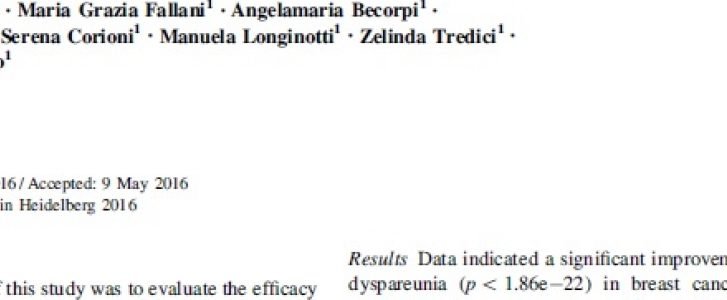DEKA announces that Cynosure Inc. (Chemsford, MA, USA) will distribute in USA and Canada the CO2 laser systemSmartXide2 for V2LR applications (MonaLisa Touch®) under the brand name of DEKA. Cynsoure has introduced SmartXide2 for the first time in USA at PAGS 2014 (Pelvic Anatomy and Gynecology Surgery) from December 4th to 6th in Las Vegas. “This agreement is an important step for millions of North America women who will benefit of this important treatment for the side effects of vaginal atrophy. We are sure that Cynosure is the right distributor because they know very well the potentiality and reliability of CO2 laser system designed by DEKA.” Commented Prof. Leonardo Masotti, President of DEKA. Cynosure is already taking many orders from US doctors and will install the first systems in few weeks. “Introducing MonaLisa Touch® in USA and Canada is very important for DEKA and all DEKA distributors. I’m sure that MonaLisa Touch® will be successful also in increasing the acceptance of this innovative and new technique all over the World.” Said Mauro Galli, Export Manager of DEKA, “DEKA has already installed more than 600 SmartXide2 systems all over the world and MonaLisa Touch® treatments are estimated to be already more than 300,000. No important adverse effects have been reported until now, placing MonaLIsa Touch® as the surest and safest laser treatment known.” DEKA believes all the MonaLisa Touch® distributors will boost their sales thank to the enormous clinical and commercial advertising going to come from the US market in the following months and will require them to duplicate their efforts to increase sales of MonaLisa Touch® in their territories.

How MonaLisa Touch treatment is changing women’s life – Online Conference
MonaLisa Touch webinar: the 19th of May 2015 – at 3:00 p.m (GMT+2) – two Professors worldwide known will talk about the therapy and answer public’s questions.
Stefano Salvatore, M.D. (San Raffaele Hospital, Milan – Italy) and Mickey Karram, M.D. (Director of Urogynecology and Reconstructive Surgery at Christ Hospital, Cincinnati, Ohio – USA) will discuss how MonaLisa Touch treatment is changing women’s life.
Webinar is an online conference where speakers and participants discuss a topic through the computer.
Participants can view presentations, ask questions and interact with the speakers.
Sign up and don’t miss this unique event!

Six scientific publications confirm the effectiveness and safety of CO2 fractional laser treatment, now approved worldwide
MonaLisa Touch® is the first laser treatment for menopause-related problems to be approved by the international medical community.
Six scientific publications between 2014 and 2015 confirm the effectiveness and safety of CO2 fractional laser treatment, now approved worldwide
Professor Stefano Salvatore, Director of the Functional Unit of Urogynaecology at the San Raffaele hospital in Milan, is among the authors of international publications about MonaLisa Touch® and will shortly be appointed as the new president of EUGA, the European Urogynecological Association
April 2015 – Over the last year six articles have been published by the most prestigious international scientific reviews confirming, including by the scientific community, the effectiveness and safety of the MonaLisa Touch® CO2 fractional laser treatment.
The publications are amongst the most authoritative: one in The Journal of Endometriosis and Pelvic Pain Disorders. two in Climacteric (the official journal of the International Menopause Society), one in Maturitas, one in Lasers in Medical Science, and one in Menopause (the official journal of the North American Menopause Society).
Peer reviewed scientific publications, controlled by impartial scientific bodies, agree in pointing out the MonaLisa Touch® treatment, developed by Italian company DEKA, as a great innovation in treating symptoms linked to vulvovaginal atrophy.
This is a unique result, obtained by banking on professional and scientific rigor: DEKA is the first and only company in the sector to have received approval at worldwide level, in international scientific publications, in regard to the validity, effectiveness and safety of CO2 fractional laser treatment used to combat menopause symptoms.
MonaLisa Touch® is a mini-invasive laser procedure treating the effects of ageing on the internal tissues of the female genital apparatus with an advanced vaginal photorejuvenation technique. The technique is based on the SmartXide2 system, which guarantees reliability and a very high performance level thanks to a CO2 laser source which emits a pulse, specially developed for this type of treatment.
The CO2 laser, controlled by appropriate computerized systems (exclusive DEKA technology), determines a regenerating action of the aged fibres and induces production of new collagen, so as to correct the volume of the mucous membrane and remodel it, also restoring hydration and elasticity effectively and painlessly.
The therapy, generally completed in ten minutes, can give benefits right from the first treatment. Further, it has no collateral effects and is also good therapy for the treatment of vaginal tissue following operations for gynecological tumors (ovaries, uterus) and breast tumors.
The worldwide scientific community has found evident improvement in the patient’s quality of life: the symptoms of vulvovaginal atrophy, including burning, itchiness, dryness, dyspareunia, laxness and problems connected with urinary incontinence, are significantly reduced at 12 weeks from treatment with MonaLisa Touch®. To this can be added an improvement in women’s sexual life when they have undertaken this laser treatment (International Menopause Society).
In general, 91.7% of patients are satisfied or very satisfied with the treatment. Moreover, no collateral effect has been encountered, thus also confirming the safety of the MonaLisa Touch® CO2 laser treatment (Maturitas).
At twelve weeks from use, the laser has been effective in reducing dyspareunia in 100% of patients, all satisfied by the results obtained (Journal of Endometriosis and Pelvic Pain Disorders).
Studies carried out confirm that the microablative CO2 fractional laser can induce a remodeling of the connective vaginal tissue without causing damage to the surrounding tissues (The Journal of the North American Menopause Society).
Professor Stefano Salvatore, Director of the Functional Unit of Urogynecology at the IRCCS San Raffaele hospital in Milan, soon to become the president of the European Uro-Gynaecological Association (EUGA), is the author of four publications on the MonaLisa Touch® and is among those who have contributed to the validation of the methodology: “When, five years ago, with Dr. Zerbinati (dermatologist) and Professor Calligaro (histologist), we began clinical and scientific validation of the MonaLisa Touch procedure, I did not expect such outstanding results. The simplicity, mini-invasive nature and safety of the procedure, performed totally in day hospital and which requires no other type of preparation such as analgesics or anesthesia, constitutes a true revolution in the gynecological field. In a short time we succeeded in getting important and incontrovertible results, which also took into account the perception of women with respect to post-treatment improvement. Italian and overseas physicians came to us to learn how the therapy functions and today MonaLisa Touch is present all over the world. Prestigious U.S. centers (such as Stanford University or the University of Cincinnati), after a short training period held by us, have commenced using MonaLisa Touch with great enthusiasm and have obtained results of the same level attained by us. Today women live more than a third of their lives after menopause, thanks to various medical-social and behavioral factors. I am glad to be able to say that MonaLisa Touch contributes to adding quality of life”.
More info at www.monalisatouch.com
About DEKA.
DEKA develops and markets laser and light-based systems allowing dermatologists, plastic surgeons, gynecologists and other medical practitioners to perform non-invasive and minimally invasive procedures to rejuvenate vaginal mucosa, treat ENT benign and malignant tumors, remove skin wrinkles, vascular and benign pigmented lesions, multi-colored tattoos, eliminate unwanted fat by DEKA-invented laser lipolysis, reduce cellulite, treat many important dental diseases. DEKA produces a broad range of laser and lightbased energy sources including CO2, Alexandrite, Diode, Nd: YAG, Er:YAG, pulsed dye, Q-switched lasers, intense pulsed and excimer lights, and radiofrequency technology. DEKA sells its products globally under its brand name through a direct sales force in the Italy, France, Japan and USA, and through international distributors in approximately 80 countries.
For corporate or product information, visit DEKA’s website at
www.dekalaser.com
PUBLICATIONS
Histological study on the effects of microablative fractional CO2 laser on atrophic vaginal tissue: an ex vivo study. S. Salvatore et al. Menopause 2015 Jan 20. doi: 10.1097/GME.0000000000000401. [Epub ahead of print]
Vulvo-vaginal atrophy: A new treatment modality using thermo-ablative fractional CO2 laser. A. Perino et al. Maturitas. 2015 Mar; 80(3):296-301. doi: 10.1016/j.maturitas.2014.12.006. Epub 2014 Dec 25
Sexual function after fractional microablative CO2 laser in women with vulvovaginal atrophy. S. Salvatore et al. Climacteric 2014 Dec 16. doi:10.3109/13697137.2014.975197 [Epub ahead of print]
Microscopic and ultrastructural modifications of postmenopausal atrophic vaginal mucosa after fractional carbon dioxide laser treatment. N. Zerbinati et al. Lasers Med Sci 2015 Jan, Vol. 30, No. 1:429-36. doi: 10.1007/s10103-014-1677-2. Epub 2014 Nov 20.
Microablative fractional CO2 laser improves dyspareunia related to vulvovaginal atrophy: a pilot study. S. Salvatore et al. Journal of Endometriosis and Pelvic Pain Disorders 2014. DOI:10.5301/je.5000184. Epub 2014 Jun 20.
A 12-week treatment with fractional CO2 laser for vulvovaginal atrophy: a pilot study. S. Salvatore et al. Climacteric Aug 2014, Vol. 17, No. 4:363-369. doi: 10.3109/13697137.2014.899347. Epub 2014 Jun 5.
MonaLisa Touch – Webinar is online
Look at the webinar with Prof. Stefano Salvatore and Prof. Mickey Karram. They talk about the history of a game changing treatment: how the MonaLisa Touch is born, the scientific publications and the experience in USA.

MonaLisa Touch Roundtable – Tips&Tricks for performing treatment
This roundtable discussion – sponsored by IAPCS (International Academy of Pelvic Surgery) – is a discussion by six adopther regarding their experience with MonaLisa Touch Therapy. Download PDF

Another Scientific Publication for MonaLisa Touch!
A new scientifc article that confirms the functionality of MonaLisa Touch treatment in cancer survivor women has been published in International Archives of Obstetrics and Gynecology.
Log in Scientific Area and read the full article
